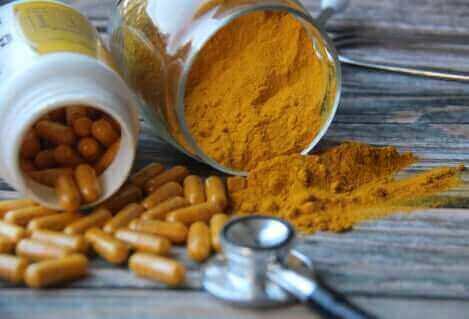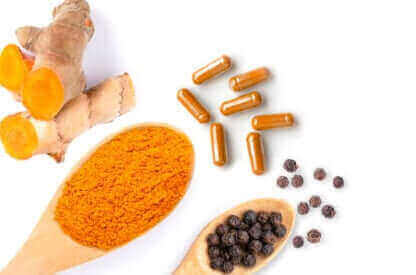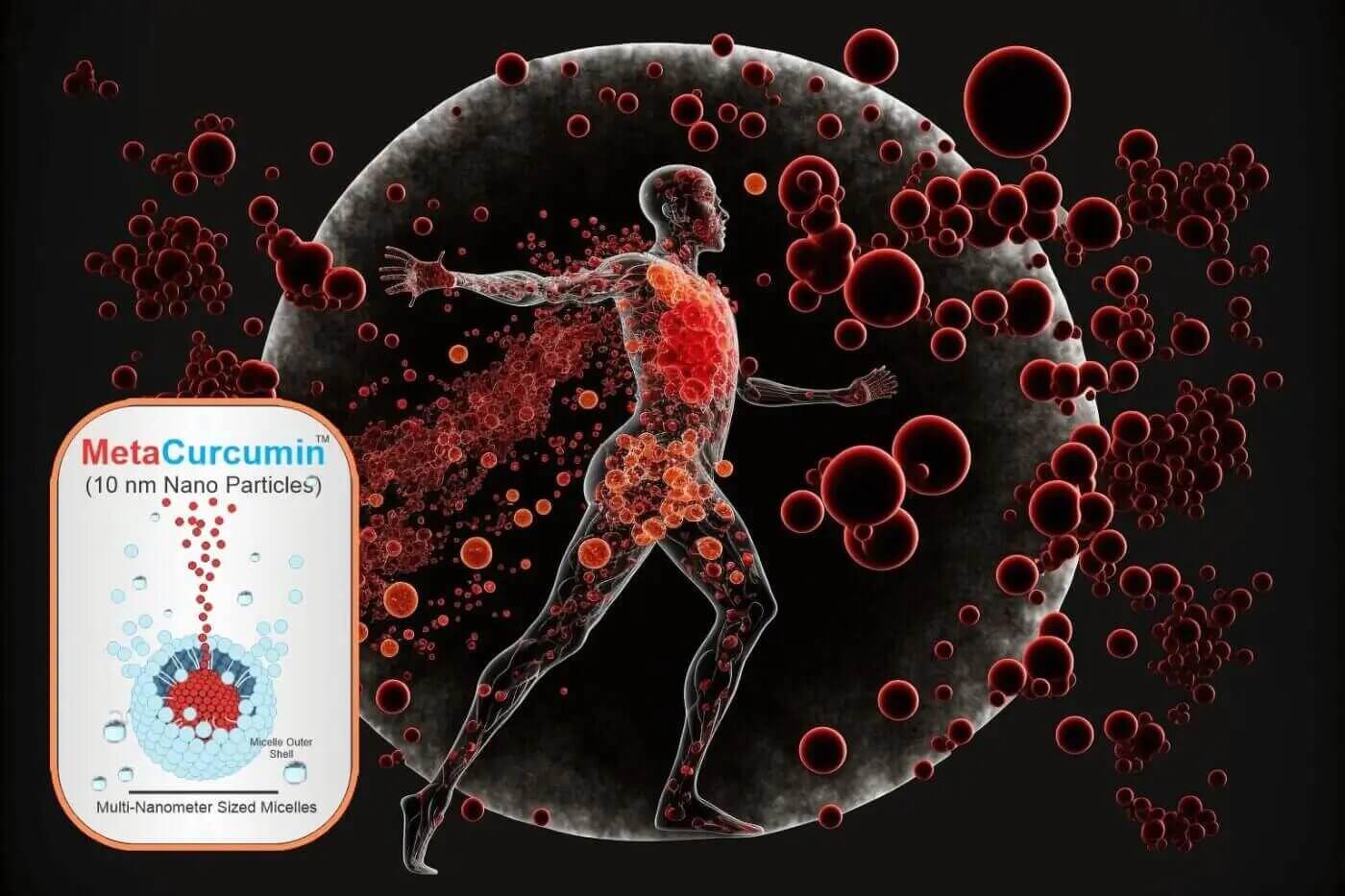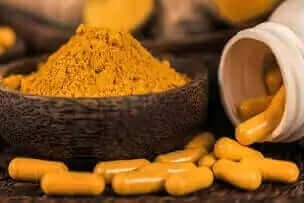Tetrahydrocurcumin: The Revolutionary Metabolite Transforming Curcumin Science
Tetrahydrocurcumin represents a groundbreaking advancement in curcumin research, offering remarkable bioavailability and stability that surpasses its parent compound. This colorless metabolite, also known as 4-HC, emerges as the primary bioactive component responsible for many of curcumin's celebrated health benefits. Scientists have discovered that tetrahydrocurcumin not only addresses the longstanding absorption challenges of traditional curcumin supplements but also demonstrates superior antioxidant properties in specific applications.
Understanding Tetrahydrocurcumin: A Scientific Breakthrough
The journey of tetrahydrocurcumin began with a simple yet profound discovery. When researchers examined how curcumin metabolizes in the human body, they uncovered something extraordinary. This metabolite, distinguished by four additional hydrogen atoms, transforms the golden-hued curcumin into a colorless compound with enhanced therapeutic potential.

First identified in 1978, tetrahydrocurcumin quickly gained recognition as the primary bioactive metabolite of curcumin. This discovery opened new possibilities for those seeking the benefits of curcumin supplementation without the typical absorption limitations. The metabolite's enhanced stability in physiological conditions makes it particularly valuable for therapeutic applications.
Why Tetrahydrocurcumin Changes Everything for Bioavailability
One of the most exciting aspects of tetrahydrocurcumin lies in its superior bioavailability profile. Traditional curcumin supplements face significant challenges with absorption and rapid metabolism, limiting their effectiveness. However, tetrahydrocurcumin demonstrates remarkable stability in phosphate buffers at physiological pH and temperature, maintaining its potency where curcumin typically degrades.
Research reveals that tetrahydrocurcumin accumulates effectively in adipose tissue, with studies showing preservation after four weeks of treatment while curcumin remains undetectable. This enhanced tissue retention suggests that the body can utilize tetrahydrocurcumin more efficiently, potentially leading to more consistent and prolonged benefits.
Superior Antioxidant Properties of Tetrahydrocurcumin

The antioxidant capabilities of tetrahydrocurcumin present compelling evidence for its therapeutic value. A comprehensive 2015 meta-review analyzing over 50 studies revealed fascinating insights into how this metabolite outperforms curcumin in specific antioxidant applications. The enhanced water solubility of tetrahydrocurcumin enables it to neutralize water-soluble free radicals more effectively than its parent compound.
Particularly noteworthy is tetrahydrocurcumin's superior protection against LDL oxidation. This property holds significant implications for cardiovascular health, as oxidized LDL cholesterol represents a primary risk factor for atherosclerosis and heart disease. Studies demonstrate that tetrahydrocurcumin provides more robust defense against copper-induced LDL oxidation compared to standard curcumin.
Tetrahydrocurcumin vs. Curcumin: A Comprehensive Comparison

Understanding the unique advantages of tetrahydrocurcumin requires examining how it differs from curcumin in practical applications. While both compounds offer valuable health benefits, their distinct molecular structures result in different biological activities and therapeutic potentials.
Key Advantages of Tetrahydrocurcumin Over Curcumin
| Tetrahydrocurcumin Benefits | Health Significance |
|---|---|
| Longer-lasting antioxidant activity with enhanced stability | Provides sustained protection against free radical damage, supporting cardiovascular health and reducing oxidative stress throughout the body |
| Superior LDL oxidation suppression | Helps prevent atherosclerosis and cardiovascular disease by protecting cholesterol from harmful oxidation processes |
| Enhanced histamine release suppression | Offers natural allergy relief by reducing histamine-mediated reactions to common allergens like pollen and dust |
| Improved blood glucose normalization | Supports healthy metabolism and helps prevent diabetes through better carbohydrate processing |
| Increased plasma insulin regulation | Enhances insulin sensitivity and production, providing powerful antidiabetic effects |
| Superior liver cell protection | Guards against alcohol-induced and other forms of liver damage, supporting overall hepatic health |
| Reduced collagen cross-linking | Combats visible aging signs and supports healthy tissue function throughout the body |
| Enhanced p53 and p21 activation | Supports healthy cell regulation and longevity through improved cellular protective mechanisms |
Areas Where Curcumin Maintains Advantages

While tetrahydrocurcumin excels in many areas, curcumin retains superiority in specific therapeutic applications. Understanding these distinctions helps individuals make informed decisions about supplementation based on their health goals.
| Curcumin Advantages | Clinical Significance |
|---|---|
| More potent immediate antioxidant effects | Provides rapid free radical neutralization for acute oxidative stress situations |
| Superior NF-kB suppression | Offers powerful anti-inflammatory effects, particularly beneficial for neuroinflammation |
| Enhanced leukemic cell apoptosis | Shows promise in blood cancer research and treatment applications |
| Exclusive nitric oxide production inhibition | Helps manage chronic inflammatory conditions including arthritis and asthma |
| Unique amyloid plaque reduction | Supports brain health and shows potential in Alzheimer's disease prevention |
| Better FOXO3a gene induction | Promotes healthy cellular aging and tumor suppression |
| Superior hepatitis C virus protection | Helps prevent viral entry into liver cells |
| Enhanced influenza A inhibition | Provides natural antiviral support during flu season |
Revolutionary Applications of Tetrahydrocurcumin in Modern Health
The unique properties of tetrahydrocurcumin open exciting possibilities for addressing contemporary health challenges. Its enhanced bioavailability means that lower doses can achieve therapeutic effects, making supplementation more practical and cost-effective. This breakthrough particularly benefits individuals who have struggled with traditional curcumin absorption.
Cardiovascular Health Protection
Tetrahydrocurcumin demonstrates exceptional promise in cardiovascular protection through multiple mechanisms. Its superior ability to prevent LDL oxidation addresses a fundamental factor in heart disease development. Additionally, the compound's stable antioxidant activity provides continuous protection against vascular damage, supporting healthy blood pressure and circulation.
Metabolic Health and Diabetes Management
For those concerned about metabolic health, tetrahydrocurcumin offers remarkable benefits. Its ability to normalize blood glucose levels and enhance insulin sensitivity makes it valuable for diabetes prevention and management. The compound works at the cellular level to improve carbohydrate metabolism, helping maintain stable energy levels throughout the day.
Liver Health and Detoxification
The liver-protective properties of tetrahydrocurcumin extend beyond basic detoxification support. Research shows it shields hepatic cells from various forms of damage, including alcohol-induced stress and medication side effects. This protection becomes increasingly important in our modern environment where liver stress factors are abundant.
Anti-Aging and Longevity Support
Tetrahydrocurcumin's ability to reduce collagen cross-linking represents a significant advancement in anti-aging science. This process, which contributes to visible aging signs and tissue dysfunction, can be effectively managed through regular supplementation. Combined with its p53 and p21 activation properties, tetrahydrocurcumin supports cellular longevity at the genetic level.
Optimizing Tetrahydrocurcumin Supplementation
To maximize the benefits of tetrahydrocurcumin, understanding optimal supplementation strategies becomes essential. The compound's enhanced stability and absorption mean that timing and dosage considerations differ from traditional curcumin supplements.
Dosage Considerations
Due to its superior bioavailability, tetrahydrocurcumin typically requires lower doses than standard curcumin to achieve therapeutic effects. This efficiency not only makes supplementation more economical but also reduces the likelihood of digestive discomfort sometimes associated with high-dose curcumin intake.
Timing and Absorption
Unlike curcumin, which often requires specific timing with meals or absorption enhancers, tetrahydrocurcumin demonstrates consistent absorption regardless of food intake. This flexibility makes it easier to maintain a regular supplementation routine, improving long-term compliance and results.
Synergistic Combinations
Research suggests that combining tetrahydrocurcumin with its parent compound curcumin may provide comprehensive benefits, leveraging the unique advantages of each. This combination approach allows individuals to benefit from curcumin's immediate anti-inflammatory effects while enjoying tetrahydrocurcumin's sustained antioxidant protection.
Future Perspectives on Tetrahydrocurcumin Research
The scientific community continues to uncover new applications for tetrahydrocurcumin, with ongoing research exploring its potential in neurodegenerative diseases, cancer prevention, and immune system modulation. As our understanding deepens, we anticipate even more targeted therapeutic applications emerging.
Current investigations focus on tetrahydrocurcumin's role in epigenetic regulation, suggesting it may influence gene expression in ways that promote healthy aging and disease resistance. These findings could revolutionize our approach to preventive health care, offering natural solutions for maintaining optimal wellness throughout life.
Making Informed Decisions About Tetrahydrocurcumin
Choosing to incorporate tetrahydrocurcumin into your health regimen represents an investment in cutting-edge nutritional science. Its proven bioavailability advantages, combined with specific therapeutic benefits, make it an attractive option for those seeking maximum value from their supplementation efforts.
Consider your individual health goals when evaluating tetrahydrocurcumin supplementation. Whether you're focused on cardiovascular protection, metabolic health, or general antioxidant support, this remarkable compound offers scientifically validated benefits that can support your journey toward optimal wellness.
Frequently Asked Questions About Tetrahydrocurcumin
What exactly is tetrahydrocurcumin and how does it differ from regular curcumin?
Tetrahydrocurcumin is the primary metabolite of curcumin, created when your body processes regular curcumin. The key difference lies in its molecular structure - tetrahydrocurcumin has four additional hydrogen atoms, making it colorless instead of golden yellow. This structural change dramatically improves its stability and bioavailability, allowing your body to absorb and utilize it more effectively than standard curcumin. Think of it as curcumin that's been pre-processed for optimal absorption.
Why is tetrahydrocurcumin considered superior for bioavailability?
Tetrahydrocurcumin excels in bioavailability due to its enhanced stability in physiological conditions and improved absorption in the digestive tract. Research shows it remains stable in body-temperature phosphate buffers where curcumin degrades rapidly. Additionally, tetrahydrocurcumin accumulates effectively in adipose tissue and remains detectable for weeks after supplementation, while curcumin often becomes undetectable. This superior retention means your body can access and use tetrahydrocurcumin's benefits over extended periods.
What specific health benefits does tetrahydrocurcumin offer?
Tetrahydrocurcumin provides remarkable health benefits including superior LDL cholesterol oxidation protection for cardiovascular health, enhanced blood glucose regulation for metabolic wellness, powerful liver cell protection against various damage sources, and reduced collagen cross-linking for anti-aging support. It also demonstrates exceptional antioxidant activity against water-soluble free radicals, better histamine suppression for allergy relief, and improved activation of longevity-related genes like p53 and p21. These benefits make it particularly valuable for those seeking comprehensive health protection.
Should I take tetrahydrocurcumin instead of regular curcumin?
The choice between tetrahydrocurcumin and curcumin depends on your specific health goals. Tetrahydrocurcumin excels in sustained antioxidant protection, cardiovascular support, and metabolic health, while curcumin shows superior immediate anti-inflammatory effects and brain health benefits. Many experts recommend combining both to leverage their unique advantages - curcumin for acute effects and tetrahydrocurcumin for long-term protection. This combination approach provides comprehensive coverage for various health concerns.
How much tetrahydrocurcumin should I take daily?
Due to tetrahydrocurcumin's superior bioavailability, effective doses are typically lower than standard curcumin requirements. While curcumin often requires 500-2000mg daily with absorption enhancers, tetrahydrocurcumin can achieve therapeutic effects at lower doses without special timing or enhancers. The exact dosage varies based on individual health goals and product formulation. Always follow manufacturer recommendations and consider consulting with a healthcare provider for personalized guidance.
Can tetrahydrocurcumin help with specific conditions like diabetes or heart disease?
Research strongly supports tetrahydrocurcumin's potential for managing metabolic and cardiovascular conditions. Its ability to normalize blood glucose and enhance insulin sensitivity makes it valuable for diabetes prevention and management. For heart health, tetrahydrocurcumin's superior LDL oxidation protection addresses a key factor in atherosclerosis development. Studies show it helps regulate carbohydrate metabolism at the cellular level while providing sustained antioxidant protection for blood vessels. These properties make it particularly promising for those with metabolic syndrome or cardiovascular risk factors.
Are there any side effects or interactions with tetrahydrocurcumin?
Tetrahydrocurcumin generally demonstrates excellent safety profiles with fewer digestive issues than high-dose curcumin. Its enhanced absorption means lower doses achieve therapeutic effects, reducing the likelihood of stomach upset. However, as with any supplement, individuals taking blood thinners, diabetes medications, or preparing for surgery should consult healthcare providers due to potential interactions. The compound's blood sugar and anticoagulant effects, while beneficial for many, require monitoring in certain medical situations.
How quickly can I expect to see results from tetrahydrocurcumin supplementation?
The timeline for experiencing tetrahydrocurcumin benefits varies based on individual health status and targeted outcomes. Its superior tissue retention means some effects, particularly antioxidant protection, begin immediately and build over time. Metabolic benefits like improved blood sugar regulation typically become noticeable within 4-8 weeks of consistent use. Cardiovascular and anti-aging effects develop gradually over months as the compound accumulates in tissues. The key advantage is tetrahydrocurcumin's sustained presence in your body, providing continuous benefits rather than the peaks and valleys associated with regular curcumin.
What makes tetrahydrocurcumin particularly effective for anti-aging?
Tetrahydrocurcumin addresses aging at multiple levels through its unique ability to reduce collagen cross-linking, a process that causes visible aging signs and tissue dysfunction. It activates longevity genes p53 and p21, which regulate cellular health and protect against age-related damage. The compound's sustained antioxidant activity provides continuous protection against free radical accumulation, a primary driver of aging. Additionally, its metabolic benefits help maintain youthful energy production and cellular function. This multi-faceted approach makes tetrahydrocurcumin exceptionally valuable for those seeking comprehensive anti-aging support.
How can I maximize the benefits of tetrahydrocurcumin supplementation?
To optimize tetrahydrocurcumin benefits, maintain consistent daily supplementation to build tissue levels effectively. Unlike regular curcumin, you don't need special timing with meals or fat consumption due to its enhanced absorption. Consider combining it with standard curcumin for comprehensive coverage of both immediate and long-term effects. Support supplementation with a healthy lifestyle including antioxidant-rich foods, regular exercise, and stress management. Some find rotating between morning and evening doses helps maintain steady blood levels. Track your progress through relevant health markers to confirm the supplement's effectiveness for your specific goals.







